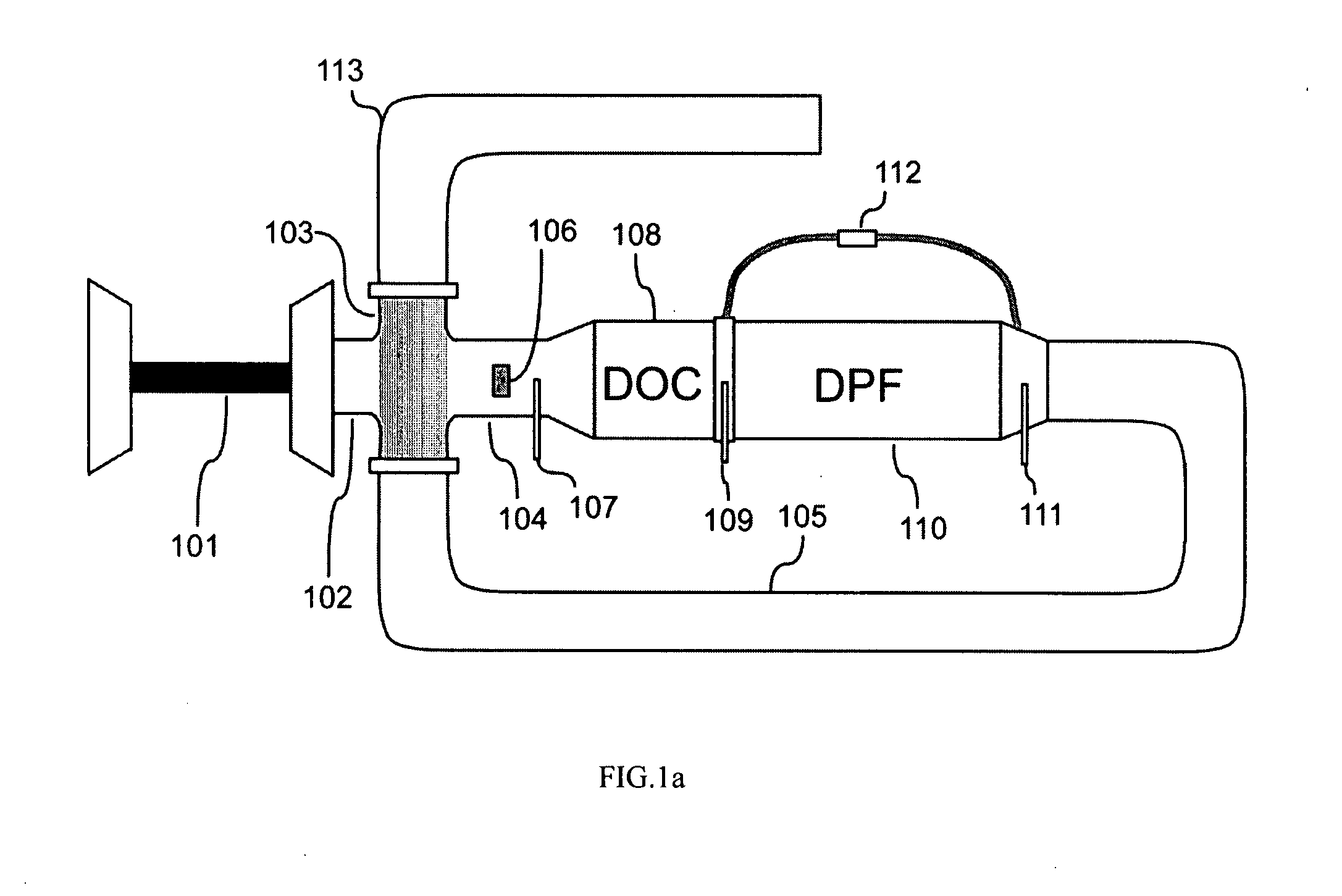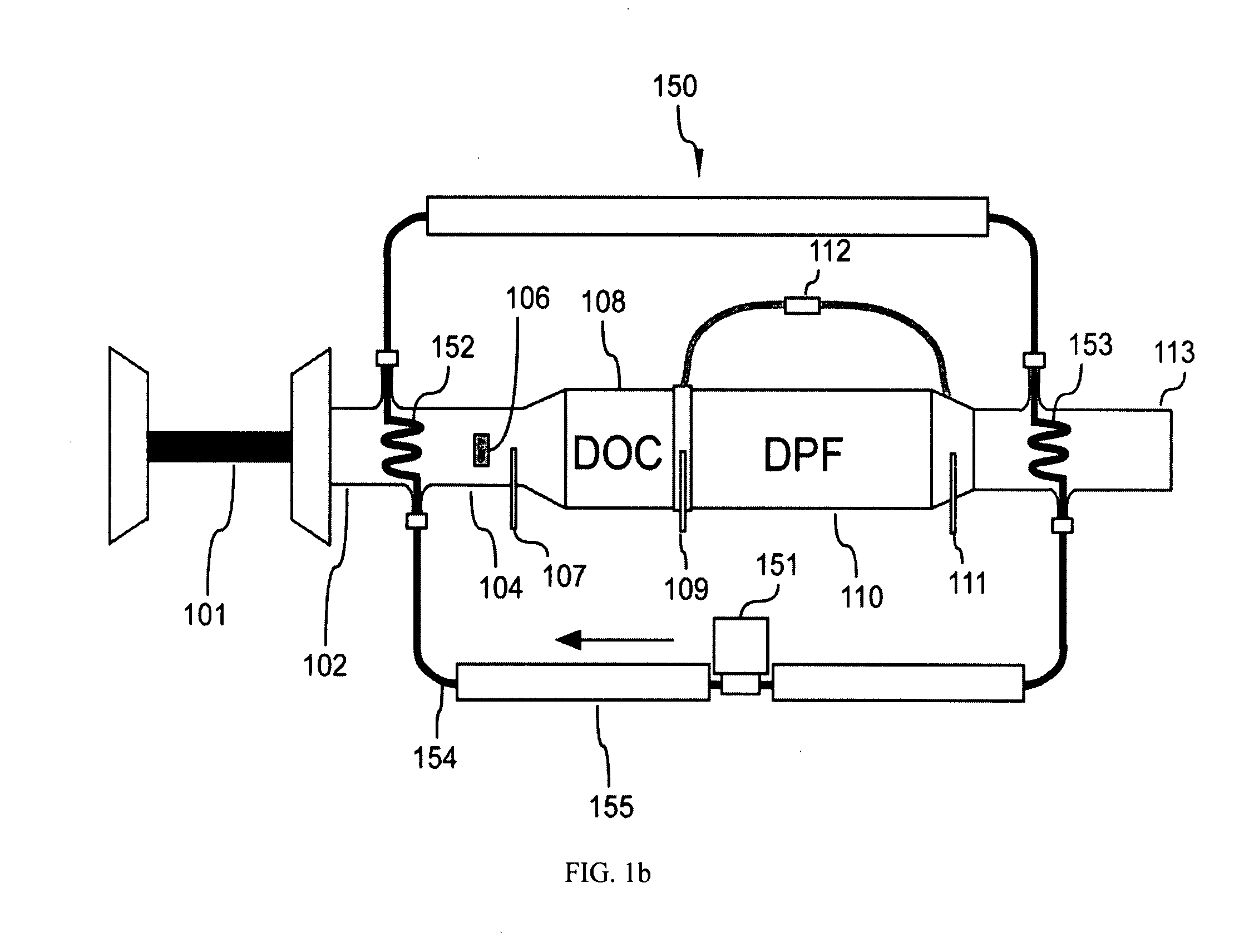Standalone thermal energy recycling device for engine after-treatment systems
- Summary
- Abstract
- Description
- Claims
- Application Information
AI Technical Summary
Benefits of technology
Problems solved by technology
Method used
Image
Examples
Embodiment Construction
[0036]As depicted in FIG. 1, in an after-treatment system, a standalone heat exchange device 103 is connected with a turbocharger 101 through a pipe 102. Another pipe 104 is used to connect the heat exchange device 103 to a DOC 108, in which the HC, CO, and NOx are oxidized. Particulate matter (PM) generated by the engine is trapped in a DPF 110. A pipe 105 connects the DPF 110 back to the heat exchange device 103, and a pipe 113 conducts exhaust air off the after-treatment system.
[0037]When certain amount of PM deposits in the DPF 110, a regeneration process is triggered, and HC injected from a doser 106 is oxidized in the DOC 108 to provide heat for burning off PM in the DPF 110. During the regeneration process, the DOC inlet temperature is measured by a thermistor 107, while the DOC outlet temperature is monitored by using a thermistor 109. To effectively monitor the DOC conversion efficiency and detect thermal runaways inside the DPF, a thermistor 1111 is connected to the outlet...
PUM
 Login to View More
Login to View More Abstract
Description
Claims
Application Information
 Login to View More
Login to View More - R&D
- Intellectual Property
- Life Sciences
- Materials
- Tech Scout
- Unparalleled Data Quality
- Higher Quality Content
- 60% Fewer Hallucinations
Browse by: Latest US Patents, China's latest patents, Technical Efficacy Thesaurus, Application Domain, Technology Topic, Popular Technical Reports.
© 2025 PatSnap. All rights reserved.Legal|Privacy policy|Modern Slavery Act Transparency Statement|Sitemap|About US| Contact US: help@patsnap.com



